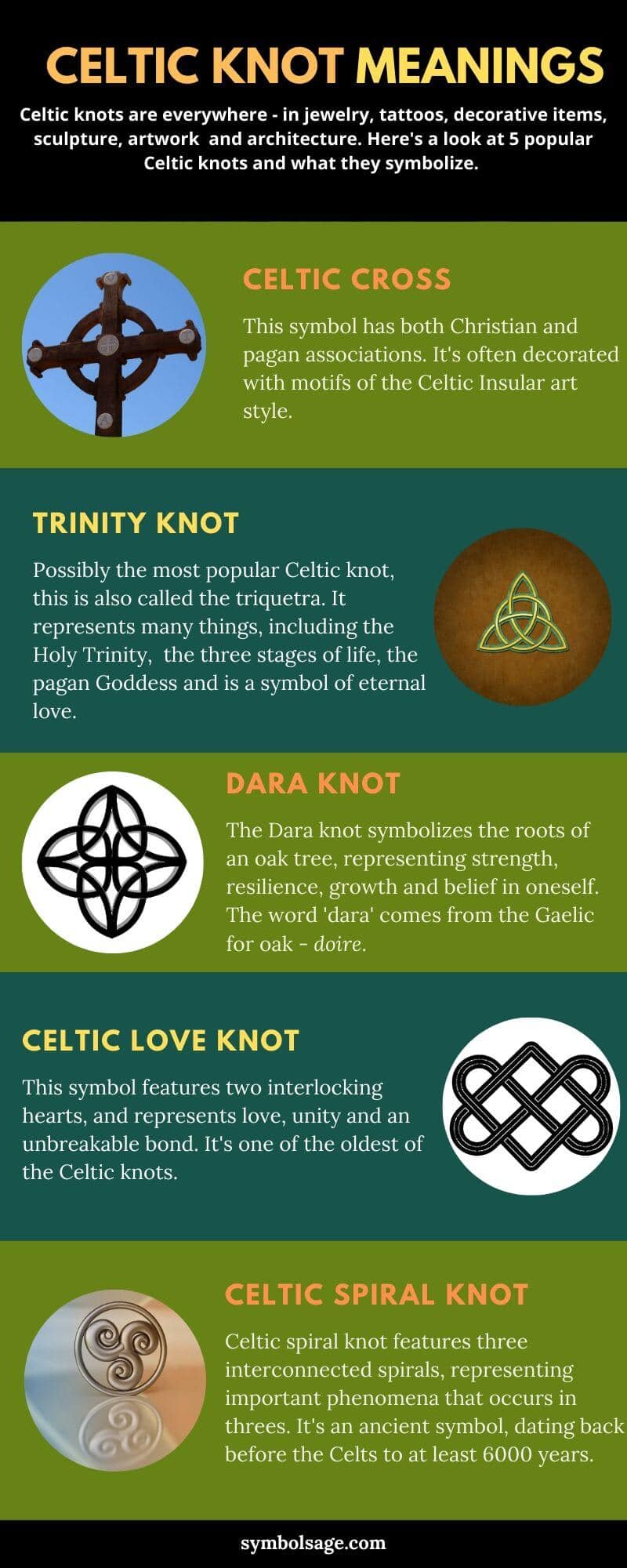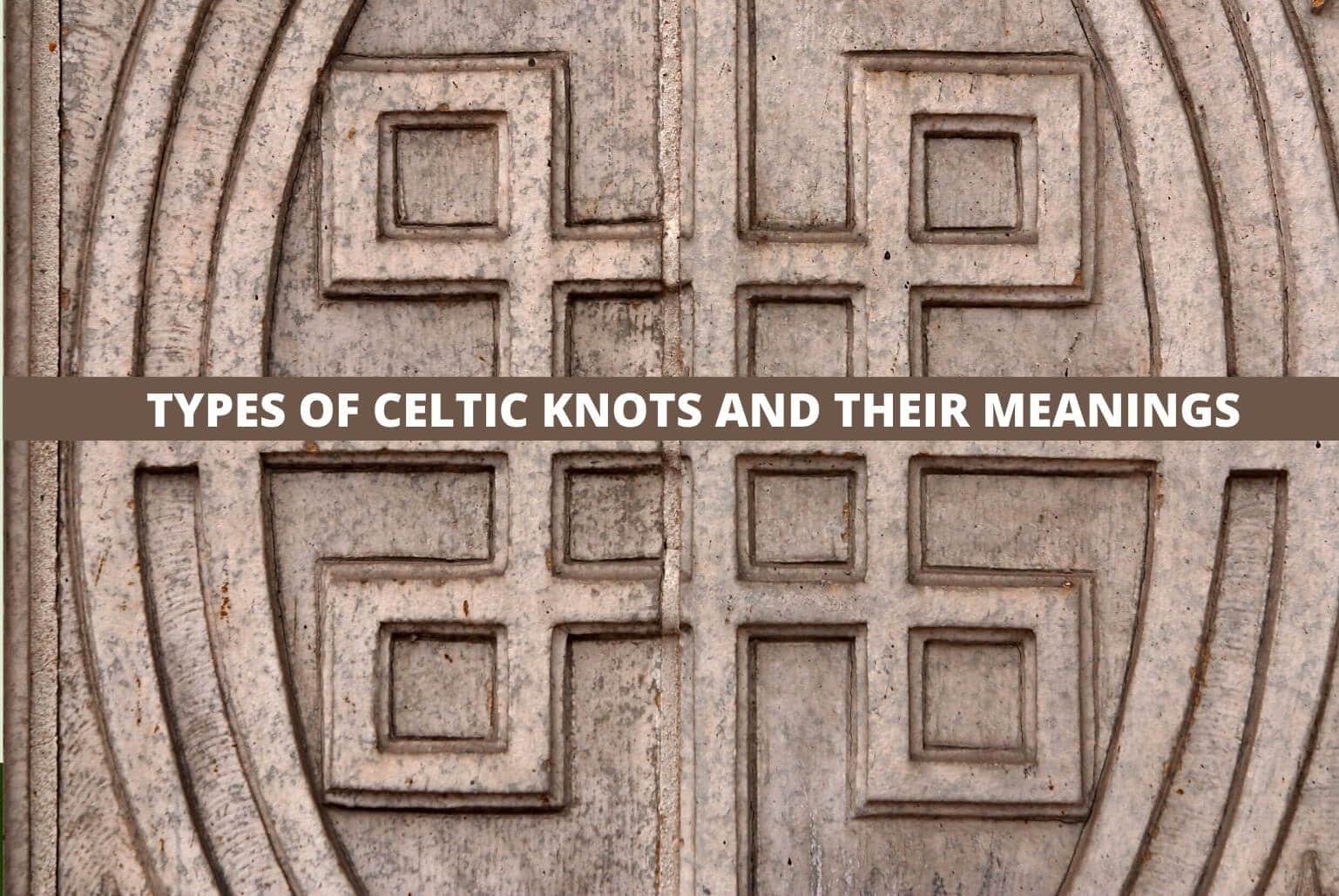
Table of Contents
Celtic knots are everywhere, in jewelry, tattoos, decorative items, sculpture, artwork and architecture. These are several types of Celtic knots, from simple to complex, with some being extremely elaborate and gorgeous in appearance.
However, while different, the common thread among these different Celtic knots is that they have no beginning or end, with a single thread completing the design. As such, Celtic knots have come to symbolize eternal love, loyalty, friendship and life.
While it’s impossible to cover everything you need to know about Celtic knots in a single article, here’s a look at the history behind Celtic knots and the meanings that they carry.
History of Celtic Knots
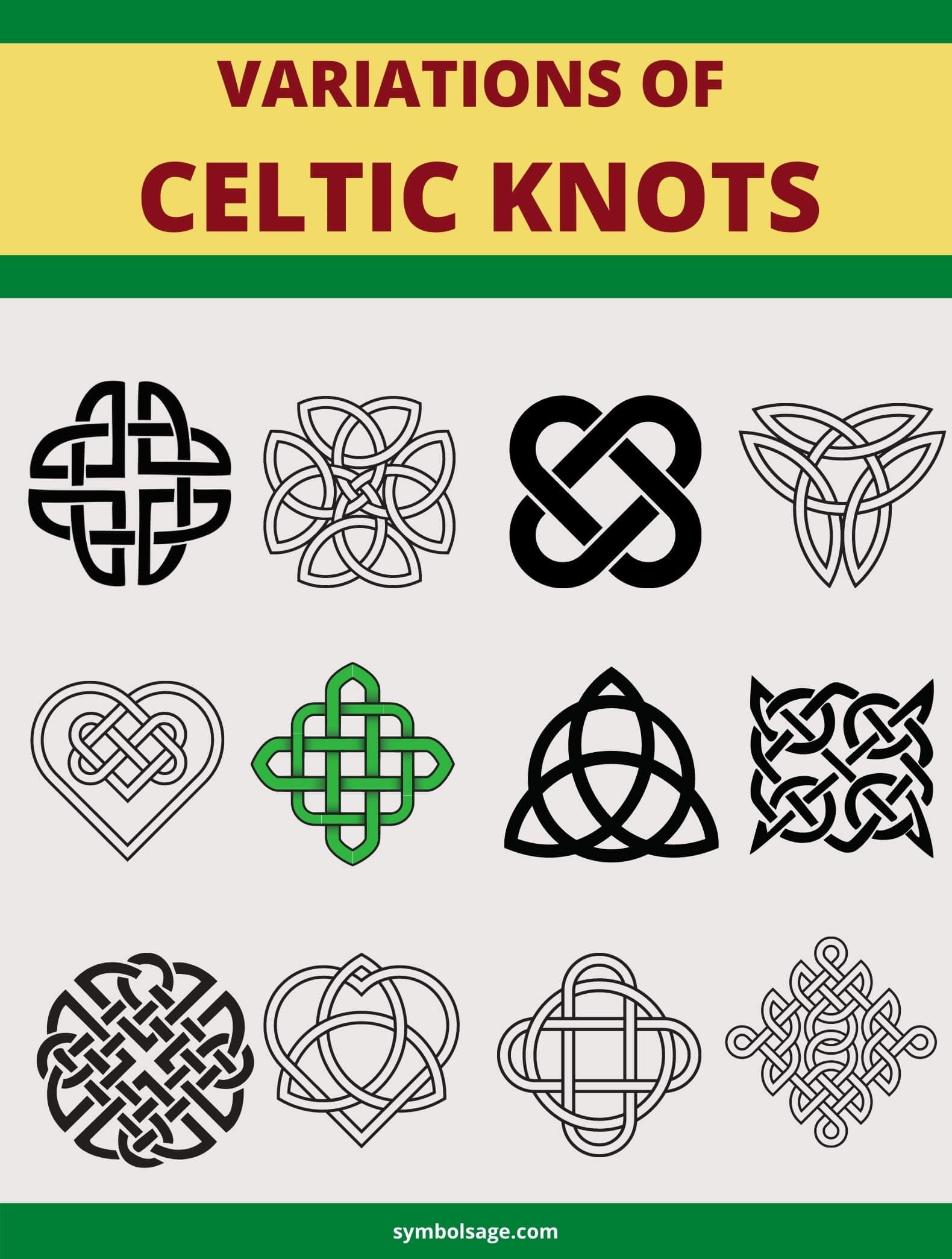
Celtic knots are one of the most popular remains of the Celtic civilization and can be seen everywhere. However, many of these knots have been found prior to the Celtic civilization, in regions such as India, Turkey and parts of Europe.
The trinity knot, for example, dates back to around 3000 B.C. and features heavily in Persian and Anatolian artwork. As a result, it’s difficult to pinpoint exactly where the knot symbols originated.
These knots first appeared in the Celtic culture around 450 A.D., during the time that the Celtic civilization began to slowly become Christianized. However, some suggest that early Celts used these knots as representations of their religious beliefs.
Representations of knots became very popular during the time that the Celtic style of Insular art flourished. Examples can be seen in the Book of Kells, which features many types of Celtic knots. These designs were used in decorative items such as jewelry, carpets, wall hangings, clothing and cutlery, as well as in architecture, sculptures and artwork.
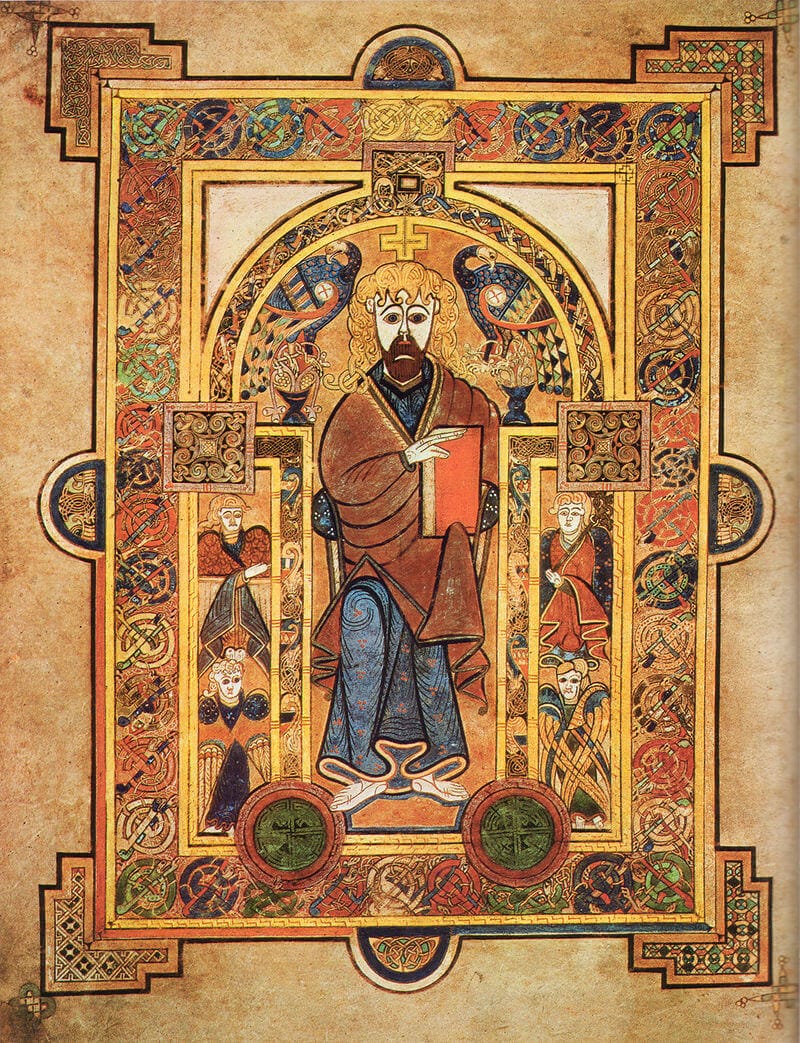
The Book of Kells features many examples of Celtic knots
Unlike most other representations of knots, which sometimes featured loose ends, the Celtic knots differed in that they always featured continuous loops with no end or beginning. They are designed with only a single thread that weaves, loops and interconnects within itself.
With the Norman invasion in the 11th century, Celtic knotwork saw a decline in popularity. However, during the Celtic Revival in the mid-19th century, these knots saw a rise in popularity. Since then, Celtic knots remain popular in artwork, architecture and fashion, among other things.
8 Popular Celtic Knots and Meanings
Here are the most popular types of Celtic knots as well as their various symbolism. However, there is no single agreed upon meaning for any of these knots, as these patterns are open to interpretation. In fact, many meanings attached to Celtic knots are relatively modern and can be traced back to the 1800s.
1. Trinity Knot (also called Triquetra)
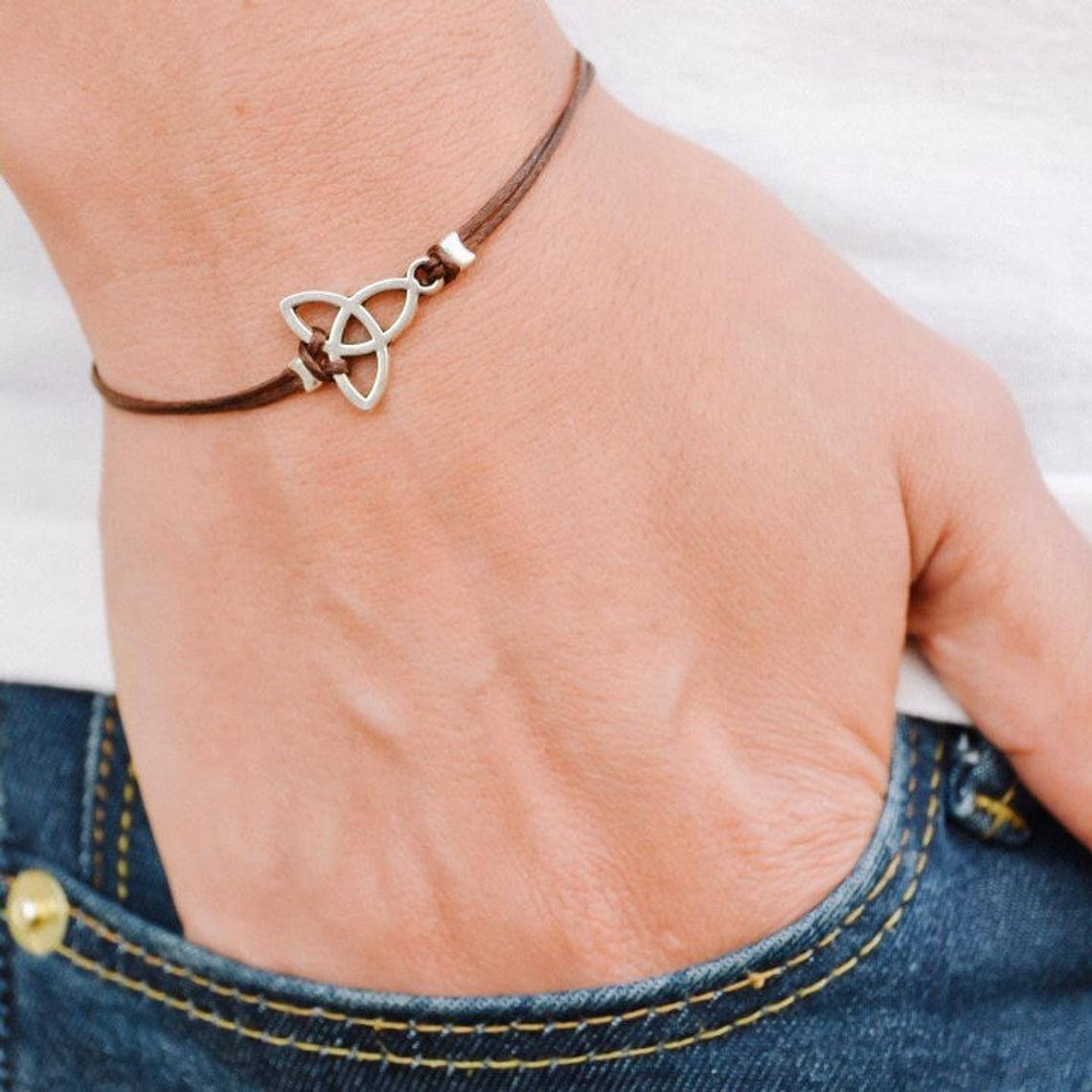
One of the most popular of the Celtic knots, the trinity knot is an ancient symbol dating back around 5000 years. Its most elemental form features three interconnected arcs, but Christian versions sometimes feature a circle in the center to represent the unity of the three components.
This symbol, also known as the triquetra, is considered the most basic of all the types of knots. It has several meanings, most notably:
- The Holy Trinity – the father, the son and the Holy Spirit
- The three-fold form of the Goddess in pre-Christian Celtic culture
- A symbol of eternity and everlasting love, as it has no beginning or end
- The stages of life – past, present and future
- Family – mother, father and child
- Mind, body and spirit
The trinity knot is popular in jewelry and fashion industries today, noted for its meaningfulness.
2. Celtic Cross
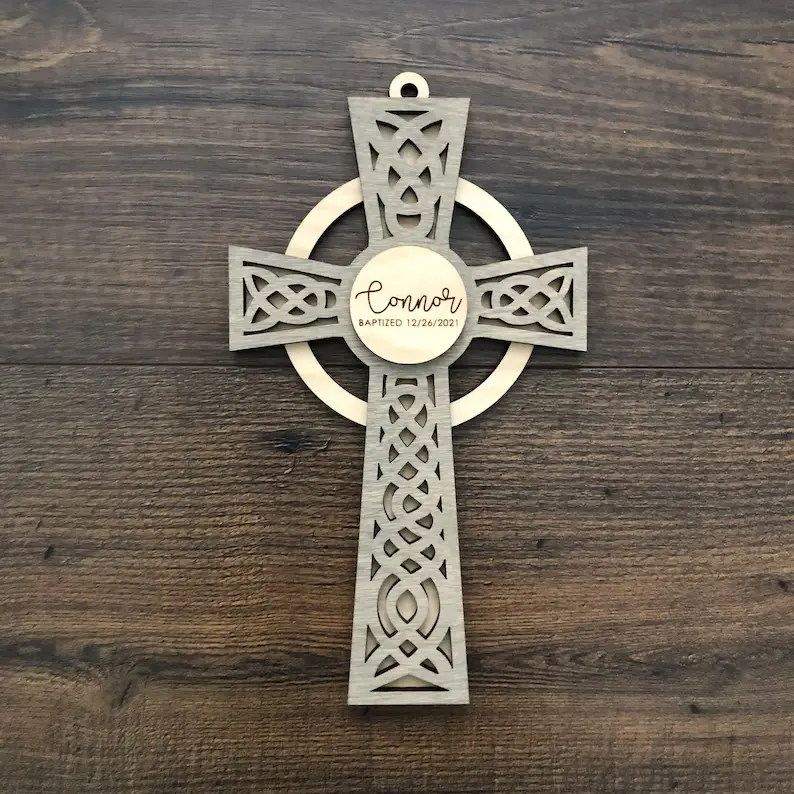
The Celtic cross features a cross with a ring encircling the point at the intersection of the four arms. The image is often decorated with motifs from Celtic Insular art. The cross holds significance to ancient Celtic religions, as a symbol of:
- The four directions – north, south, east, west
- The elements – earth, fire, water, air
- As a meeting place for divine energies
Later on, the symbol was adopted by the Christian church as a symbol of the cross on which Jesus died.
While today the Celtic cross is a popular symbol in jewelry and other decorative items, it used to be popularly used as a grave marker and as a public monument.
3. Dara Knot
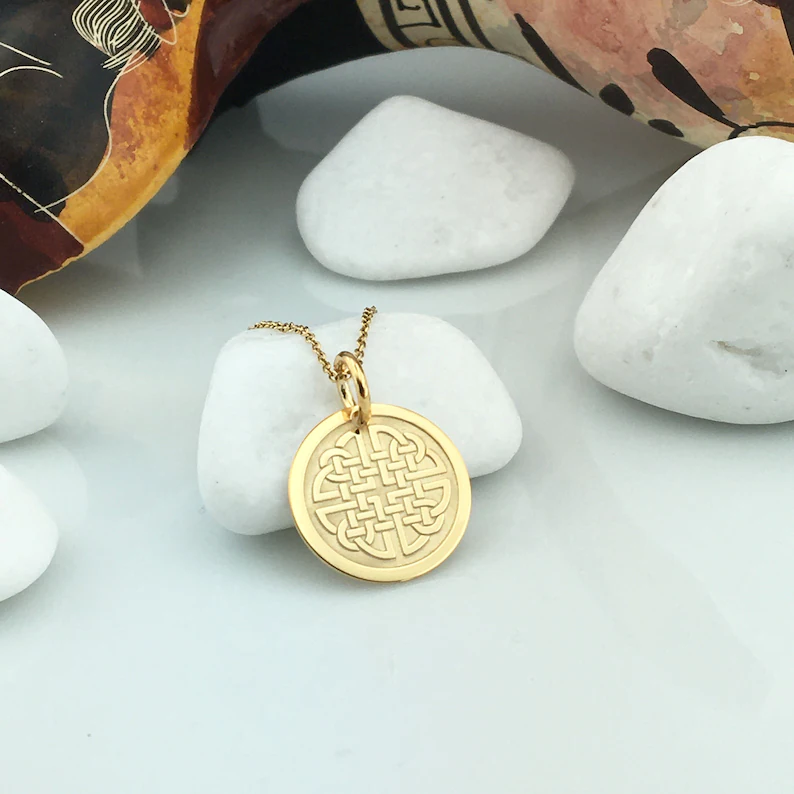
The Dara knot has many variations, from simple to more complex representations. The common theme, however, is that the symbol is meant to represent an oak tree’s root system. From a symbolic standpoint, the knot represents strength, inner strength, resilience, growth and fertility. The word Dara comes from the Gaelic word for oak tree – doire.
The Dara knot appears to be a more recent addition to the catalog of Celtic knots but it demonstrates the characteristics of Celtic knots in general, such as having no end or beginning, being created with a seemingly single thread and is a closed design.
4. Celtic Love Knot
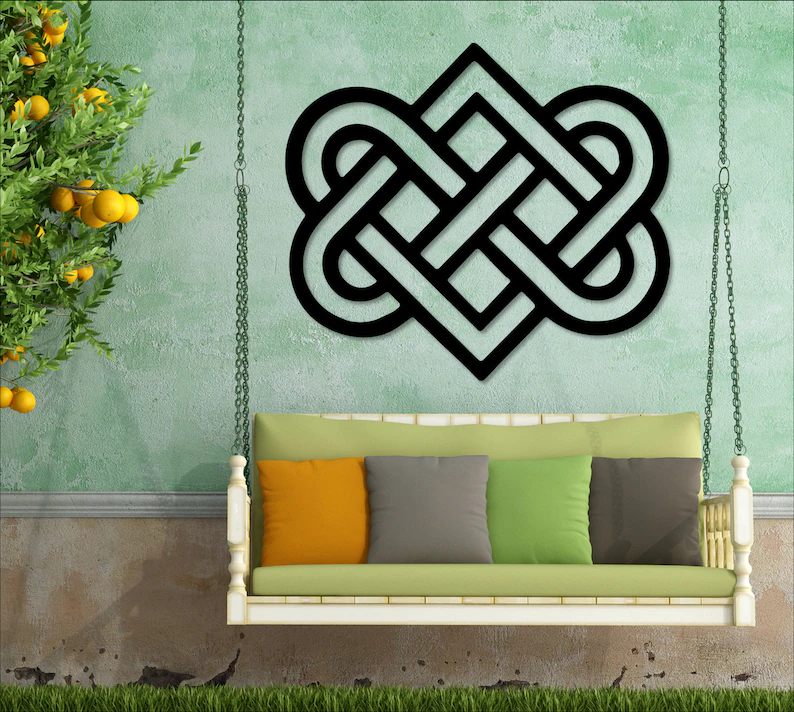
While there are many variations to the love knot, the Celtic love knot is a beautiful simple symbol that features two interlocking hearts. But if viewed carefully, four hearts can be found in the design.
It is among the oldest and best known of the Celtic knots. The Celtic love knot represents love, an unbreakable bond and unity. It’s an excellent symbol to give a close friend, family member or partner at special occasions, including anniversaries, graduations, engagements and even weddings.
5. Celtic Spiral Knot
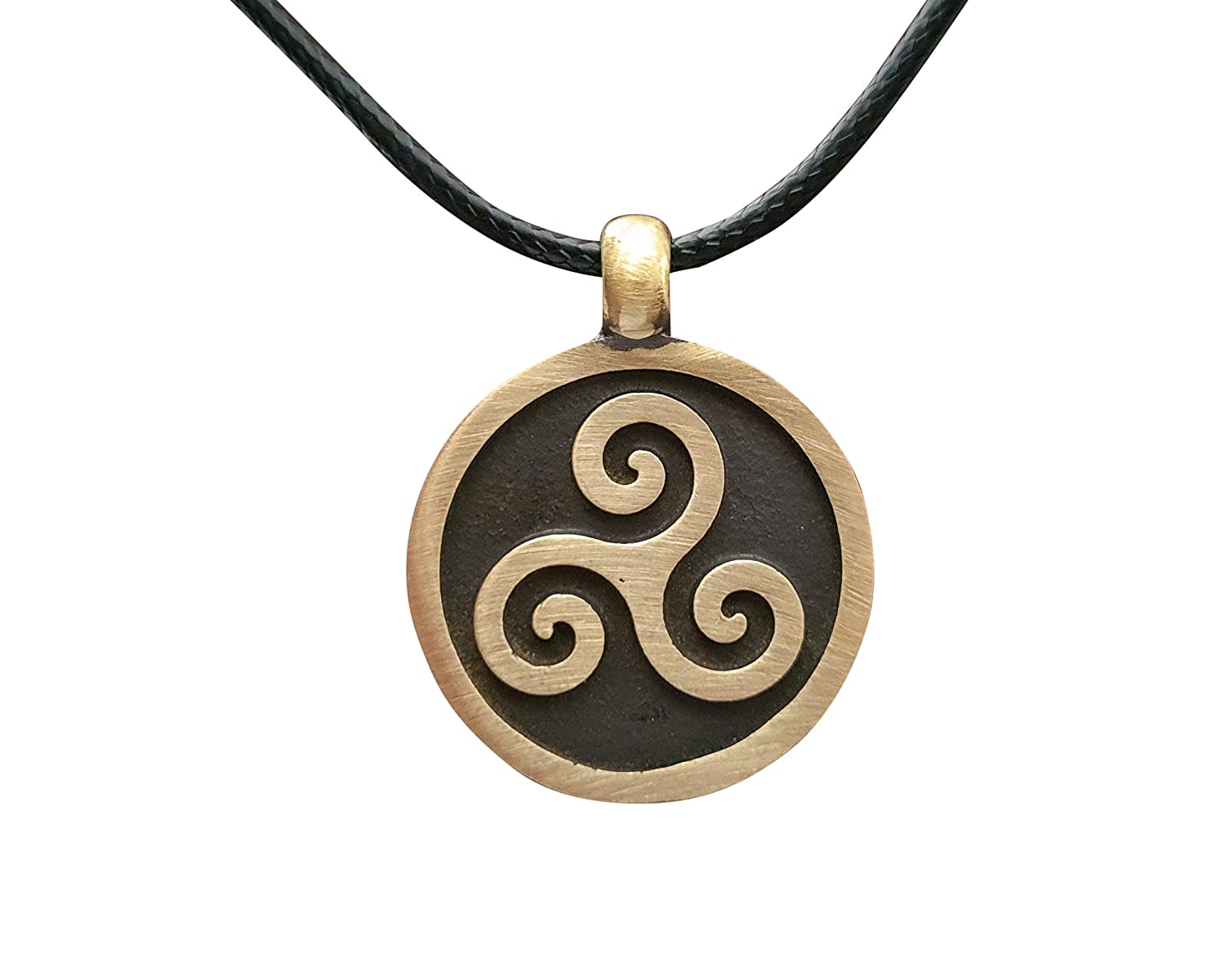
In Celtic culture, spirals were equally popular as knots and were in use before the advent of the knot designs. The spiral knot, also known as the triskele, was in existence even before the Celts, dating back around 6000 years. However, it was used from around 3200 years ago in Celtic culture.
Like the trinity knot, the spiral knot also holds significance for various cultures and religions. However, it’s most notable for its depiction of three components. As such, it can be thought to symbolize:
- The three elements – earth, sky and water
- Mind, body and spirit
- The past, present and future
- Creation, preservation and destruction,
- In Christianity, it can represent the Holy Trinity, the three temptations of Christ, and the three days from death to resurrection.
6. Celtic Shield Knot
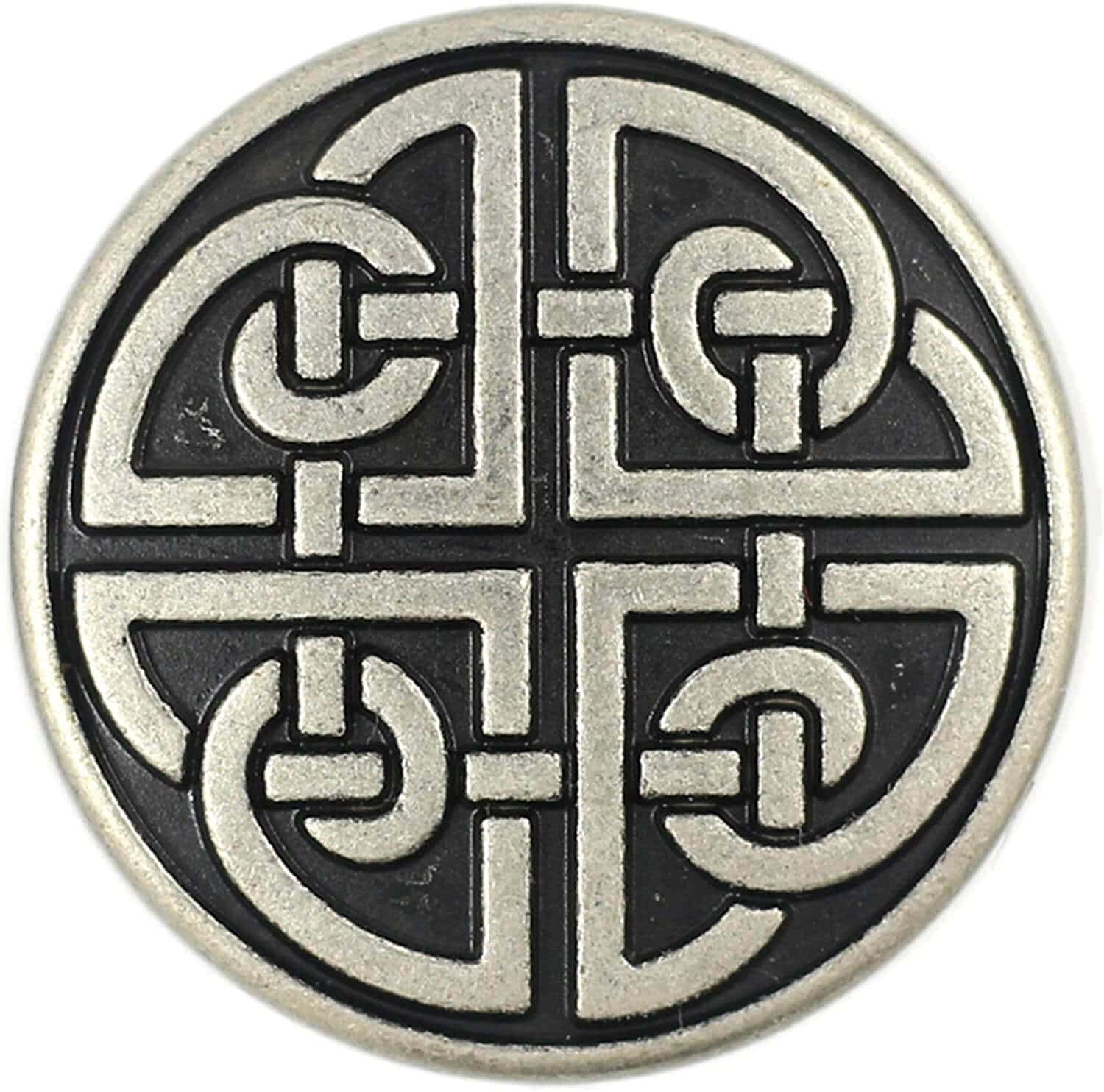
The Celtic shield knot symbolizes protection. See this here
The Celtic shield knot was typically used as a protective symbol, to keep evil at bay. While it’s typically associated with the Celts, this symbol is much older and is often considered a universal image. The symbol was often carried by soldiers or placed on battlefields, to protect them from harm.
The shield knot also symbolizes love, unity and loyalty between friends, family and couples. It’s often seen on promise, engagement or wedding rings and given as gifts.
7. Solomon’s Knot
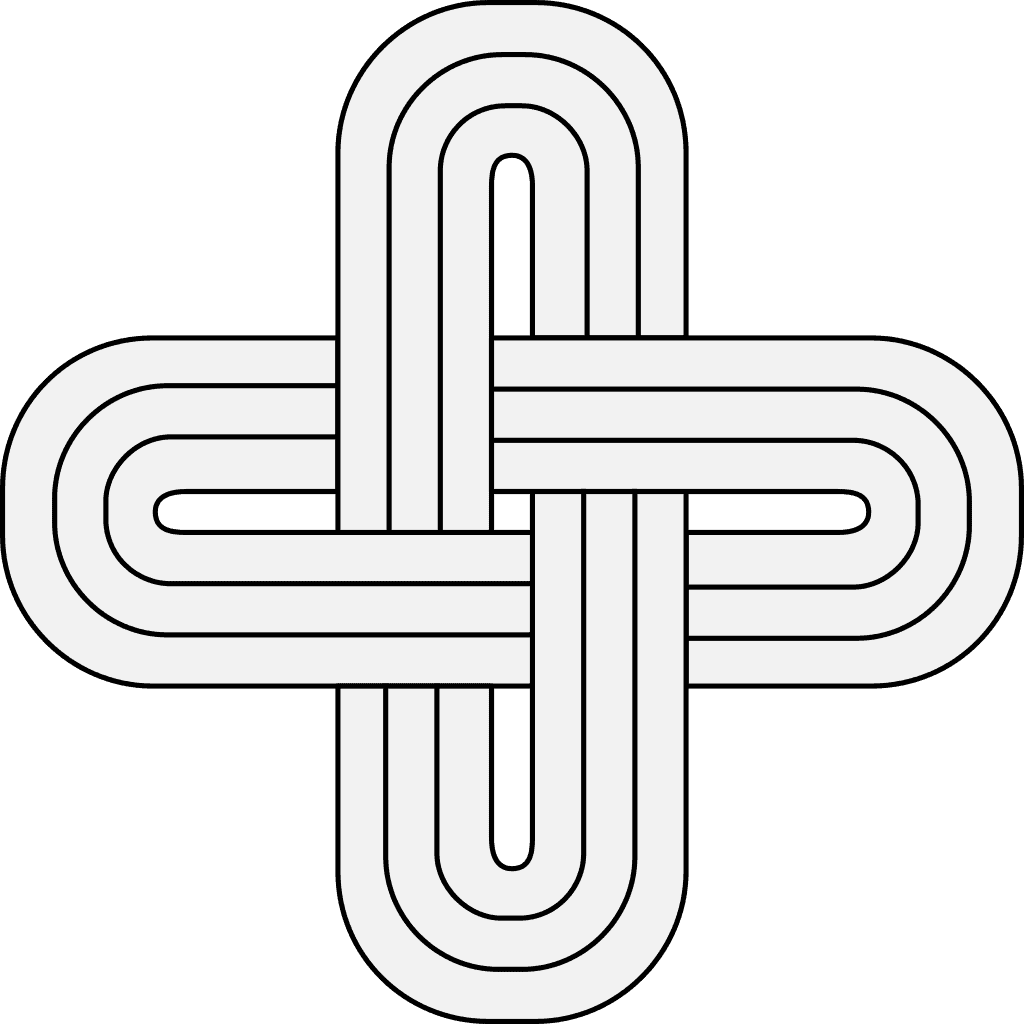
A lesser known type of Celtic knot, Solomon’s knot features a simple design with four arms. It looks like a regular square cross, but what makes it stand apart is how the knot interweaves. This creates a symmetrical and intricate design.
The knot is named after the wise King Solomon of the Bible, but there doesn’t appear to be a direct link between the knot and King Solomon himself. Because of this, we don’t really know the exact origins of the symbol, but because of its association with the wise king, the symbol represents wisdom, creative thinking, and love.
The name Solomon’s Knot was given to the symbol after the Christianization of the British Isles in the 5th century AD. What the Celts called the symbol is unknown.
8. Celtic Sailor’s Knot
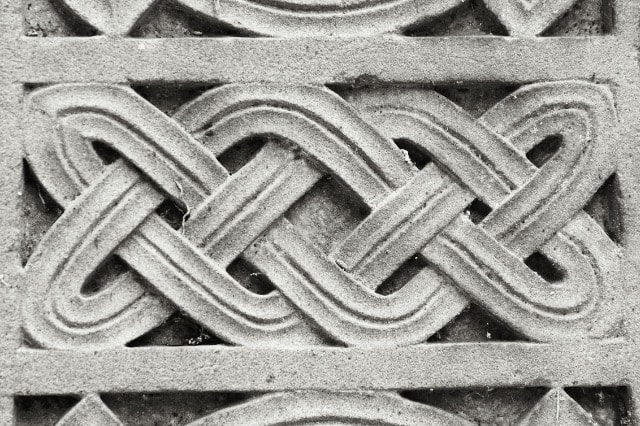
There are many types of sailor’s knots, and not all of them are Celtic ones. However, the Celtic sailor’s knot is a beautiful design, featuring two ropes that are intertwined to create a woven pattern.
The Celtic sailor’s knot is simple in its appearance but shows a design that holds a strong bond. The way the two ropes are woven together gives it strength, symbolizing unity and an unbreakable bond.
Wrapping Up
These are just some of the most popular types of Celtic knots, but there are many that exist. These knots are elaborate, gorgeous in appearance and meaningful designs. They remain as popular as ever in the use of jewelry, artwork, tattoos, clothing, decorative retail items, and even in architecture.
To learn more about other types of knot symbols, check out our guides on the Gordian knot and the endless knot.
